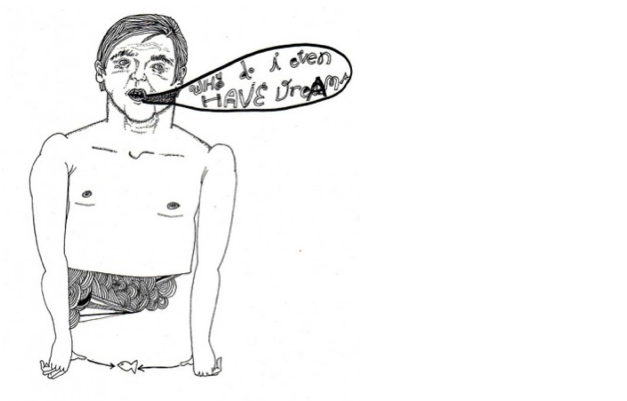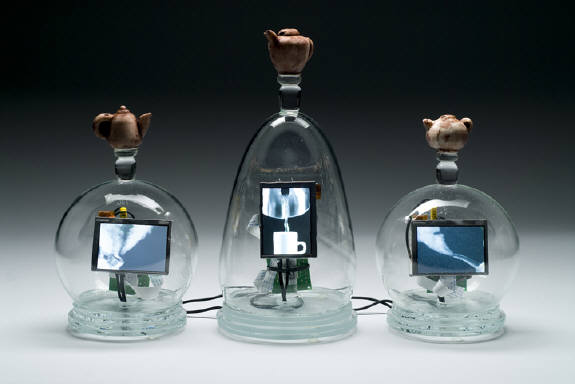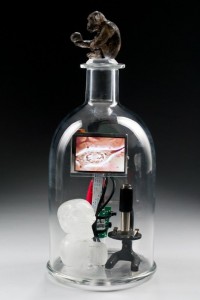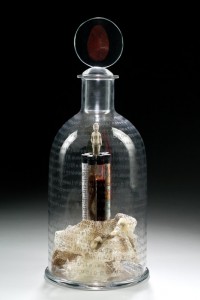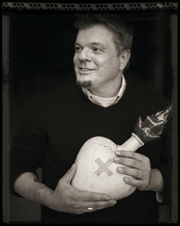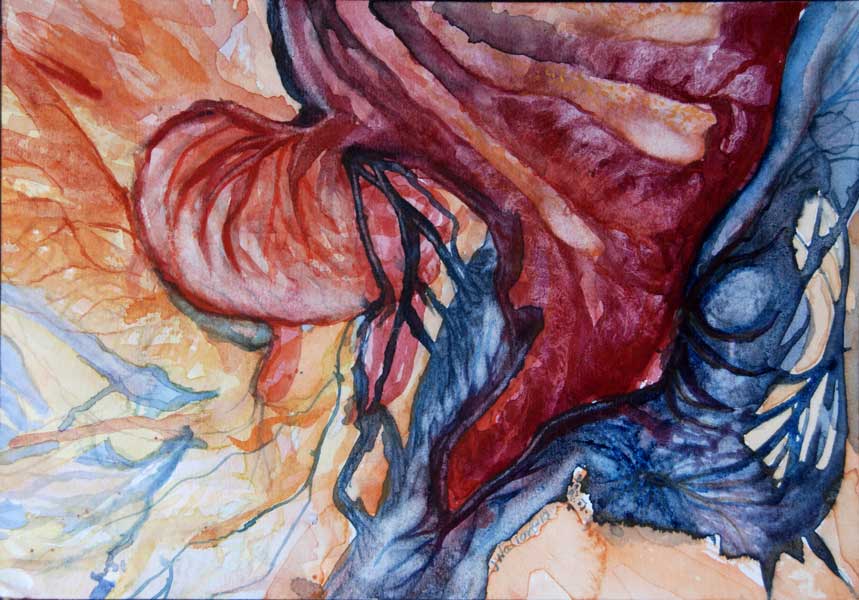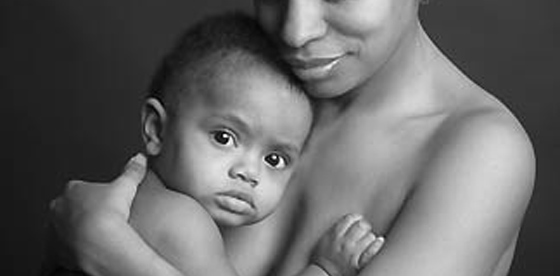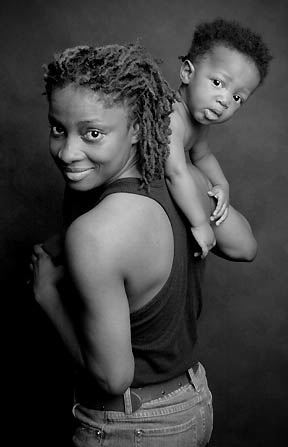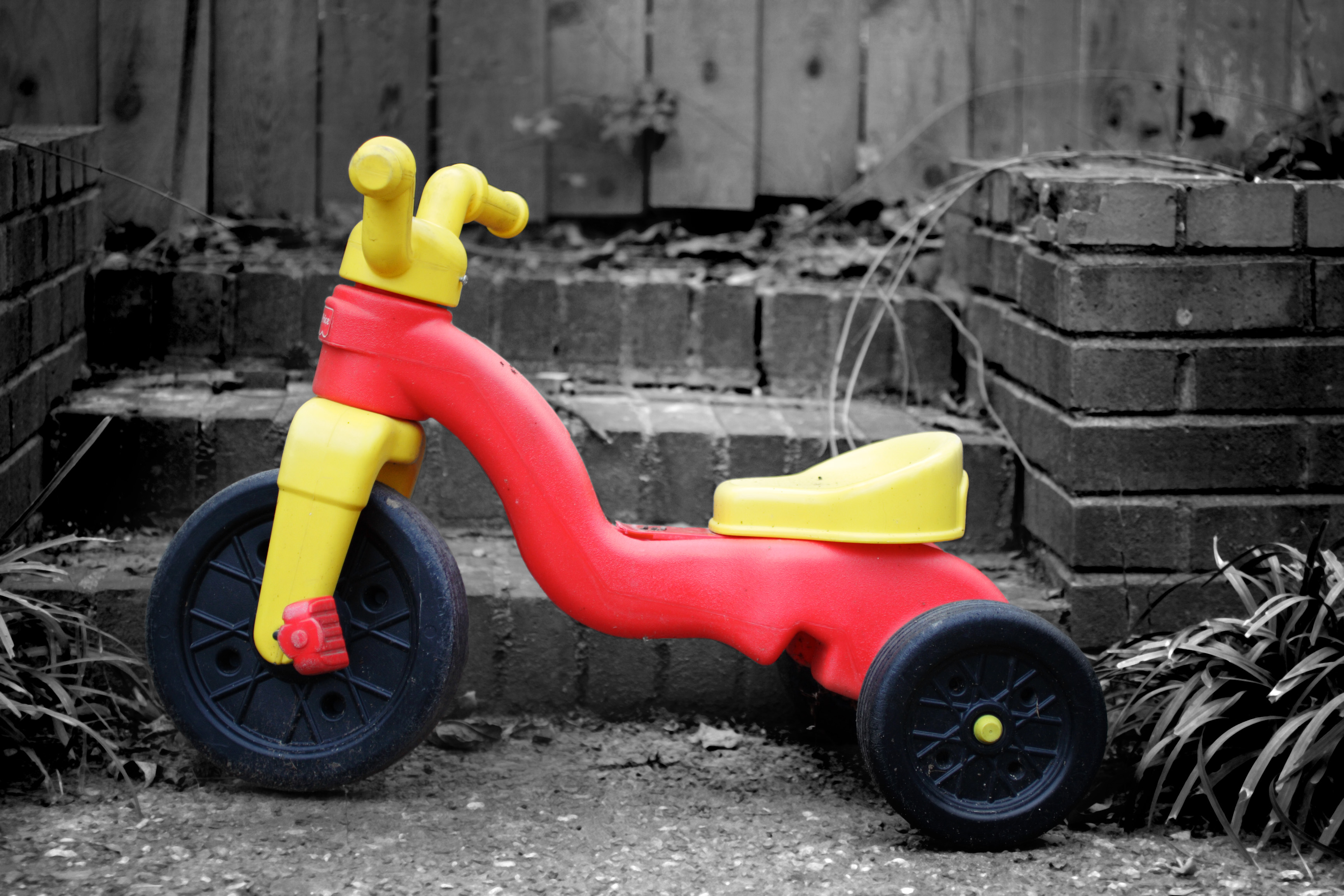Make yourself known to me.
I take fruit on the verge
of turning, just before the bugs come to taste. I come to see
the fish tanks bubble and glow, and filter in the window,
when the streetlamp is a metallic peach.
You were sleeping. Where were you?
I stand and
the headlights get closer, but I still watch, and
always too close before I run.
You try too hard. Say again your dream.
Finally, there is no more praying for a federal black boot
to explode the doorway. The song is a breech baby.
I am drawing a taut snake across her middle cello.
So, amidst it, when did the song play?
Her arm disappeared into a closet,
it reappeared with a record, she spun the groove along her fingernail.
Say a waking thing.
Like a globetrotter. Like a skeleton piloting a plane. I heard that
once. In a lecture hall. It was a laureate speaking.
Describe the song flood.
I remember boiled throat water, a new ocean
says Nevermind.
I was the famous babe with atlantis eyes, staring out
from the album cover. She was the peach skin bottom
where all the weight goes. A black mass waits too
for every part of us to sink. It eats there, by biding
at the bottom with her.
What then when you woke?
I read about sociopaths on the wiki. I phoned a friend
who said he got stood up. I wrote a letter to someone
sarcastically signed “Antoine.”
Did then you go back to her?
I built parking around my room, I got a skylight and a spotlight.
I hit the roof, and she came.
Was there a wanting dream?
I begged her to light the fuse, and wait it out—
to watch the color die in the air. Suspended there.
It was a bomb that could not land.
Where do you go in the light?
The Meridian. The trees of axis wag their bones—
they say Not Here, You Misheard Perdition for Permission.
What is there for you?
There are empty fountain beds, frozen this month,
There is a hollowed hooker bush. I visit Dante there,
to his statue, I come
To Say?
“My dream is done, my dream endures,
the memory flames, and I am the same”
More waking.
If without the bus, without a friend,
I will always choose to walk.
What yet cannot you forget of the dark?
Spun dead wax, on and on;
No opening bands, no ‘brands of tedium,’
just my set of songs.
Why have you come to me?
For an interrogation.
Can not you ask an expert?
I can trick them. I need a detective. An agent. A lawyer.
Then what am I to you?
A memory of someone to whom I confessed. For you I will again.
Then that I will be for you.
Or else I am sick.
What will you do with her in the light?
I cannot say. “till night,
we watch the divining dance of the fuse.”
Andrew Bucket lived as a student in the Jiminez Porter Writers House at UMD, was a Lannan Fellow of the Folger Shakespeare Library, and co-founded a popular weekly reading series that you’ve never heard of. He has been published in WYWS Magazine, Mad Alley Magazine, Stylus, That Far Down, and stinted as the advice columnist: Uncle Bucket. He started a viral-celebrity-death-rumor, and is currently launching a D.C. literary journal called The Folly.
The Interrogation (the dream chorus) by Andrew Bucket (c) Copyright Andrew Bucket; printed by permission of the author.
Artwork courtesy of Haley Dolan.
